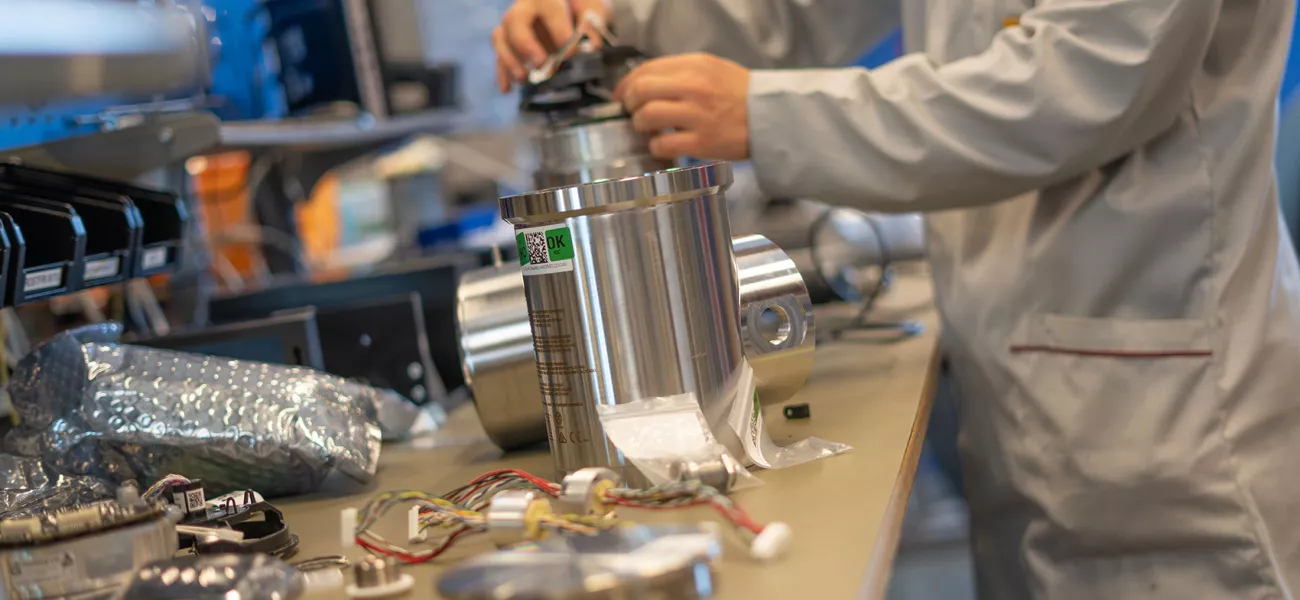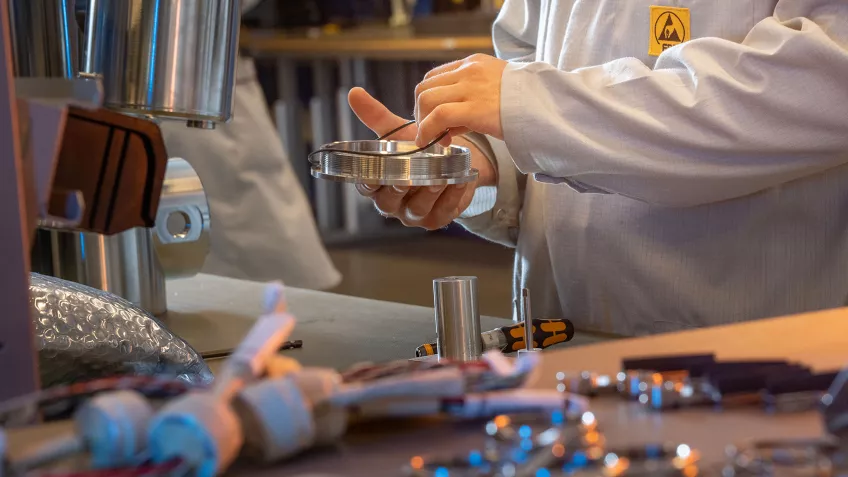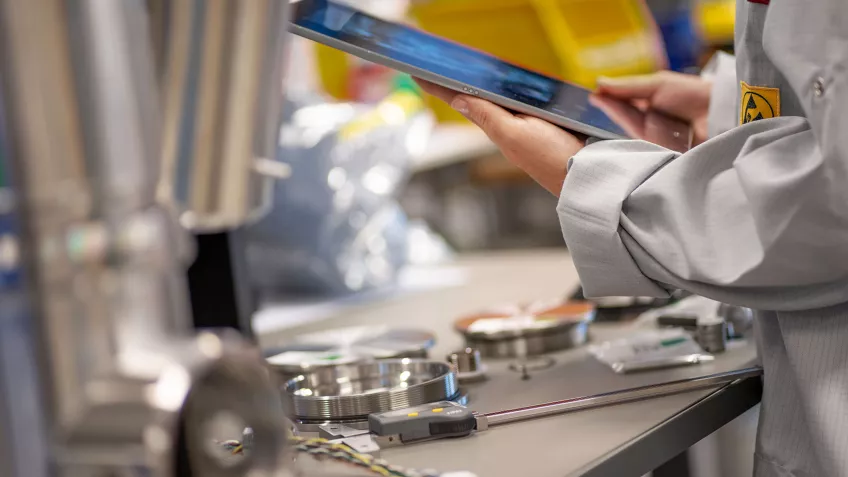
At Axis we believe in the importance of maintaining strong sustainability practices across our supply chain. A solid supply chain is essential to delivering high quality and sustainable solutions. If one link in that chain is weak or compromised, it can risk the integrity of the entire thing. The more links in that chain the more important it is that each is taken care of.
We have several mechanisms in place to ensure that our suppliers understand and adhere to the behaviors and business practices we expect. The most fundamental of these is that we ask our suppliers to sign our Supplier Code of Conduct. This is based on our own Code of Conduct, the UN Global Compact’s Ten Principles in the areas of human rights, labor, environment, anti-corruption and Responsible Business Alliance guidelines . If suppliers adhere to it, then we’re happy that they’re behaving in a way that meets our exacting standards.
Audits to improve business processes
While signing the Code of Conduct is one thing, consistently meeting its requirements is another thing entirely. Sustainability focuses and practices vary from business to business, and from country to country. As a result, suppliers often need to change or alter their own business practices to adhere to our standards. This process of sharing best practices and supporting suppliers through any possible transition is one that is welcomed by both sides.
This is where another critical process comes into play: our supplier audits. These are undertaken regularly for our sustainability critical suppliers and contract manufacturers and, despite the perception of an audit being an onerous test, ours are designed to be highly collaborative, and focused on helping the supplier improve their business processes. But that’s not to say they aren’t also incredibly detailed – whether conducted on-site, online or as a hybrid audit.

Sharing best practices
It’s a rigorous process, but one that’s essential if Axis is to continue to meet its stringent standards for environmental performance, health and safety, labor practices, and business ethics. But it’s one that suppliers see positively, as Ausra Reinap, Senior Environmental Engineer at Axis, and a member of the company’s Environmental Council explains: “The vast majority of our suppliers welcome the audits. In many ways, we can act as consultants to them, sharing best practice from other suppliers, providing training and support, and increasing understanding."
Remote or hybrid audits
With travel and face-to-face contact restricted during the pandemic, on-site supplier audits were difficult to conduct. Cancelling audits would have hindered our ability to ensure suppliers are adhering to our Code of Conduct, so we revamped our supplier audit process instead. Now we can run audits online, on-site, or in a hybrid manner to ensure our exacting standards are being met.
While we prefer an on-site audit with new suppliers, remote or hybrid audits are ideal for situations where we have existing supplier relationships. For example, the process of reviewing a supplier’s documentation is as comprehensive when done virtually as it is on-site, but it optimizes resources, saves time, and reduces our carbon footprint.
It's important that both parties understand the limitations of a virtual process. For instance, it’s not ideal for a walk through of the factory floor to see the production process. Looking through a webcam is restrictive; you don’t have the ability to explore the surroundings. It also makes it challenging to understand the layout of the factory and all the processes taking place on that site.
Similarly, communication can be more difficult when discussions happen remotely. When we need to discuss wages, working hours, health & safety or other issues relating to human rights, it is better to have those conversations in person and avoid any miscommunication.
Supplier audits are a critical process, and we need to be sure our high standards are met. To do this, we run thorough risk evaluations to identify where online and hybrid audits can be conducted. We reserve this approach for existing suppliers only, as it’s best suited for situations where we already have a trusted relationship and a good understanding of a supplier’s business.

Two-day audit on-site
When auditing a new supplier or running an on-site visit as part of a hybrid audit with an existing supplier, our team typically spend at least two days on site. Suppliers receive a detailed agenda of what we want to run through as well as a request to complete a self-assessment form ahead of the scheduled audit. During the audit itself, we’ll meet key personnel from the Health and Safety, Management, Human Resources, Quality Control, and Environmental teams, in addition to undertaking a tour of any manufacturing facilities.
Ausra Reinap explains how a typical on-site audit works: “We begin with briefing on our requirements based on the Axis Supplier Code of Conduct. Afterwards we take a factory tour where we focus on environment, occupational health, and safety by looking at various processes within production, specifically where hazardous processes take place. We visit chemical storage as well as hazardous waste storage. We look at water treatment processes as well as how emissions to air are controlled. We go through documentation such as environmental aspect list and targets, risk evaluation of occupational hazards, etc.”
She continues: “To verify compliance with our requirements regarding working hours, contracts, health examination, health and safety training, etc. we review documentation on randomly selected employees.”
Taking action
Following every audit, we produce a report of our findings and any actions we need to see taken to improve those areas highlighted as not meeting the standard. These need to be achieved within three months of the audit, which we could assess through a follow-up audit or visit.
Through long-term collaboration and close interaction with our suppliers, distributors, and partners, we aim to boost transparency and encourage ethical business behavior throughout our entire value chain. This is a key element of our focus on responsible business conduct. At Axis, we actively engage in maintaining strong ethical standards – taking action to make sure business is conducted in a responsible, transparent, credible, and consistent way.
How our goals determine our partners
Achieving our end goal of making the world a smarter, safer place is one that drives us in all that we do. It is this ambition that determines who we work with, and how we work with them. The importance of working together to achieve common goals cannot be understated. Without the help of suppliers and vendors we would be unable to achieve our shared aims. This plays a large part in both the way we approach our partnerships but also how we build on them going forward. For us, sustainability is more than just environmentalism, it goes beyond that, and this is something that is reflected in our supplier audits and partner discussions.
Ausra explains “Going forward we need to advance our processes when choosing suppliers, when reviewing their performance, and also enhance in more deeper understanding on human rights risks to people”